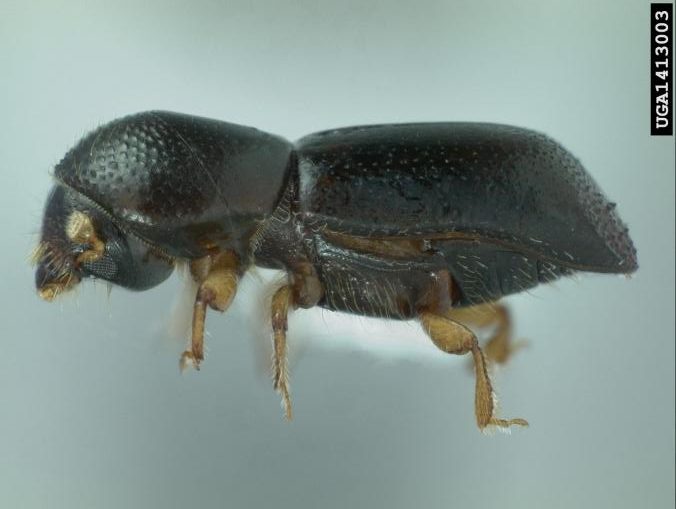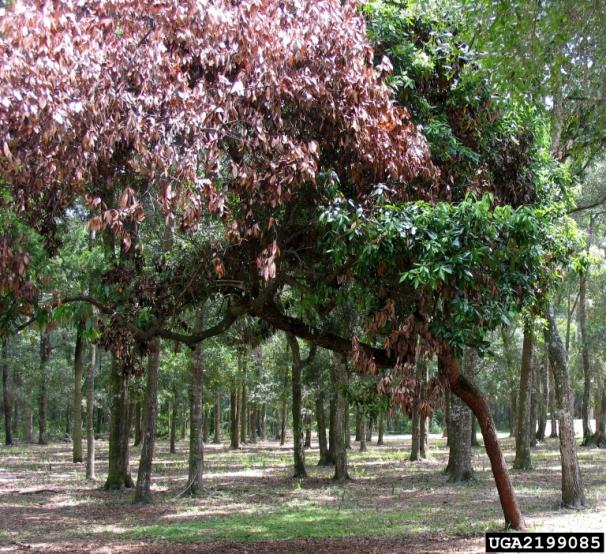Redbay Ambrosia Beetle
The Redbay Ambrosia Beetle is the primary vector of the fungus that causes Laurel Wilt, a disease that can kill several North American tree species.

Florida Department of Agriculture and Consumer Services, Bugwood.org
About the Redbay Ambrosia Beetle
Redbay Ambrosia Beetle (xyleborus glabratus) adults are small, 2 mm long, slender, cylindrical, and brown-black in color. It is very similar to other members of the genus, but the combination of its coloration, glabrous elytra, and abrupt declivity distinguishes it from other species (Mayfield and Thomas 2006).
The larvae are white, c-shaped, legless grubs with an amber-colored head capsule (Rabaglia 2005). A specialist should be consulted for positive identification of adults and larvae due to their similarity to other species. Very little is known about the life cycle and biology of Xyleborus glabratus.
Adult females construct galleries in the sapwood and inoculate the galleries with a fungus (Ophiostoma sp., vascular wilt pathogen). The adults and larvae feed on fungi and not on the wood of the damaged host plant. Females are believed to be able to fly 2-3 km in search of a host. Males are dwarfed, haploid, and flightless and are rarely seen.
Redbay Ambrosia Beetle Hosts
In the US, redbay ambrosia beetles have been associated with redbay and sassafras. The Ophiostoma fungus associated with Xyleborus glabratus has also been recovered from pond spice, indicating that this plant may also be a host.
All plants are members of the family Lauraceae and are important to wildlife as browse and fruit plants. Redbay also serves as host to larvae of the Palamedes swallowtail (Papilio palamedes (Drury)), which feeds primarily on species of Persea.
Damage Caused by the Redbay Ambrosia Beetle

The principal damage is tree wilt caused by colonization of the xylem cells by the Ophiostoma fungus. Attacked trees exhibit wilted foliage with reddish or purplish discoloration within a section of the crown or throughout the entire crown. The foliage eventually turns brown and tends to remain on the branches.
Like other ambrosia beetles, small strings of sawdust (ejected wood fiber) may be present at the point of attack. The fungal infection is evidenced by stained sapwood visible upon removal of bark or in cross-sections of the stem.
How to Control the Redbay Ambrosia Beetle
There are no tested or proven treatments for managing the redbay ambrosia beetle and its associated fungus. Like other exotic species, redbay ambrosia beetle will continue to naturally expand its range. In order to reduce its spread, no wood or chips from infested trees should be transported out of the local area.
If you would like more information about redbay ambrosia beetles, please contact your local MFC forester.
